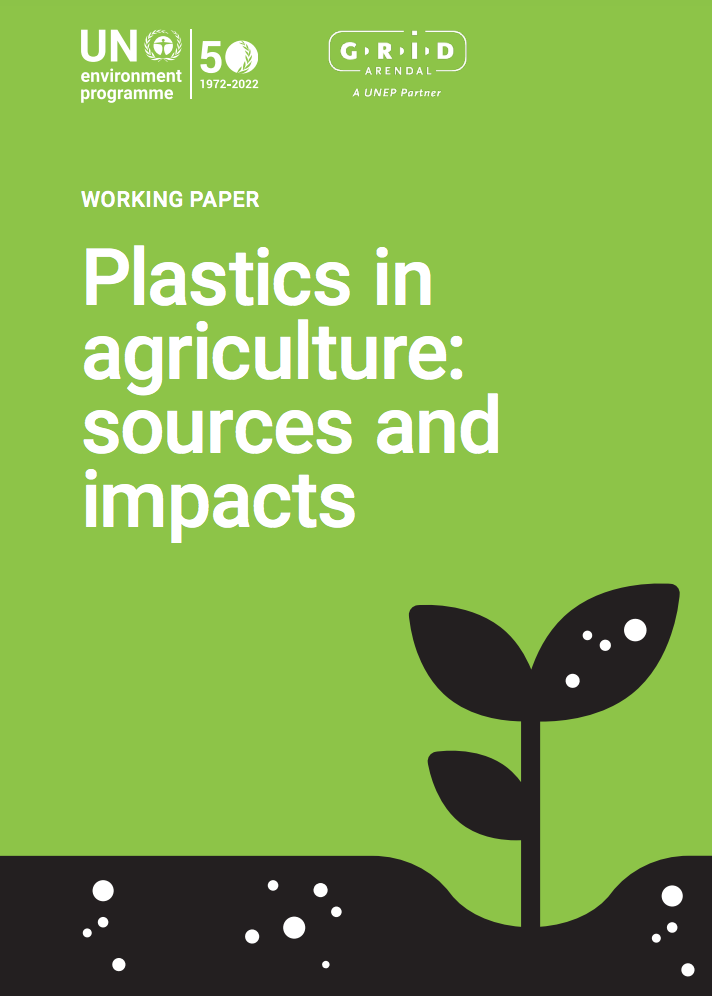UNEP has published a report on Plastics in agriculture – sources and impacts. The paper investigates the source of plastic in soil, the adverse effects of microplastics, the movement of microplastics from the soil to other ecosystems and whether we can use plastic more sustainably or replace it all together?
This working paper is an initial assessment of the potential impact of plastics used in agriculture. The paper focuses primarily on identifying sources of plastics and examining the fate of plastic residue in agricultural soil. It is expected to be the first in a series, which will also explore the movement of agricultural plastics from source to sea. The aim of the series is to increase knowledge and awareness and to invite
discussion and action among relevant stakeholders to reduce plastic contamination of soil and the movement of agricultural plastics into the broader environment.
Summary
• Modern agriculture relies heavily on products that contain plastic.
• There is evidence that plastics, including microplastics, are accumulating in agricultural soil. This can impact soil properties, which in turn can affect agricultural productivity.
• The business model for agricultural plastic products currently relies on many single-use plastic products.
• Some non-biodegradable plastic products are being replaced by biodegradable ones. However, there is concern regarding the time frame for degradation and the completeness of the process in the natural environment.
• The rate of biodegradation of plastic in soil is influenced by soil moisture, UV-light, temperature, pH and the type and size of the plastic.
• At present, there is limited evidence that
microplastics can move through the soil into plants and into food consumed by humans.
• Microplastics can adsorb other soil contaminants such as heavy metals and toxic organics. However, this is considered a minor pathway for contaminant accumulation.
• As concentrations of microplastics in soil increase, they may influence carbon and nutrient cycling due to changes in soil structure and microbial and fungal abundance.
• Microplastics can be washed out of agricultural soil into other ecosystems, including inland waterways and the coastal and marine environment.
• Nature-based farming practices may be cost-effective, even on a large scale, if cobenefits are included in accounting.
The full report can be accessed here
